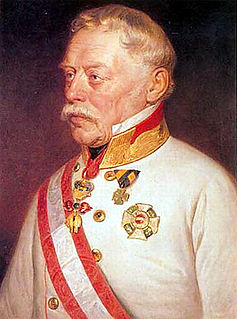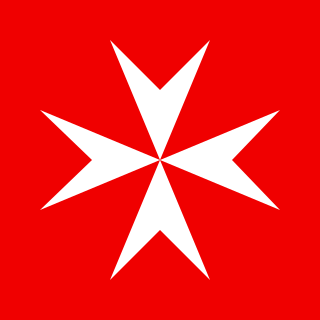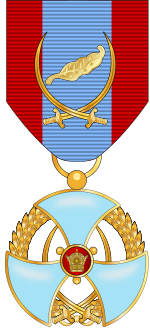
The Order of Merit of the Federal Republic of Germany is the only federal decoration of Germany. It was created by the first President of the Federal Republic of Germany, Theodor Heuss, on 7 September 1951, and has been awarded to over 200,000 individuals in total, both Germans and foreigners. Since the 1990s, the number of annual awards has declined from over 4,000, first to around 2,300–2,500 per year, and now under 2,000, with a low of 1752 in 2011. In recent years, women have made up a steady 30–31% of recipients. Colloquially, the decorations of the different classes of the Order are also known as the Federal Cross of Merit (Bundesverdienstkreuz).

The Order of Merit is a Commonwealth order of merit recognising distinguished service in the armed forces, science, art, literature, or for the promotion of culture. Established in 1902 by King Edward VII, admission into the order remains the personal gift of its Sovereign—currently Edward VII's great-granddaughter, Queen Elizabeth II—and is restricted to a maximum of 24 living recipients from the Commonwealth realms, plus a limited number of honorary members. While all members are awarded the right to use the post-nominal letters OM and wear the badge of the order, the Order of Merit's precedence among other honours differs between countries.
Knight's Cross refers to a distinguishing grade or level of various orders that often denotes bravery and leadership on the battlefield.

Grand Cross is the highest class in many orders, and manifested in its insignia. Exceptionally, the highest class may be referred to as Grand Cordon or equivalent. In other cases, there may exist a rank even higher than Grand Cross, e.g. Grand Collar. In rare cases, the insignia itself is referred to as the "grand cross".

The Maltese cross is a cross symbol, consisting of four "V" or arrowhead shaped concave quadrilaterals converging at a central vertex at right angles, two tips pointing outward symmetrically.

A necklet is a type of decoration which is designed to be worn and displayed around a person's neck, rather than hung (draped) from the chest as is the standard practice for displaying most decorations.

An order of chivalry, order of knighthood, chivalric order, or equestrian order is an order of knights typically founded during or inspired by the original Catholic military orders of the Crusades, paired with medieval concepts of ideals of chivalry.
Commander, or Knight Commander, is a title of honor prevalent in chivalric orders and fraternal orders.

The Order of the Crown of Italy, Italian: Ordine della Corona d'Italia, was founded as a national order in 1868 by King Vittorio Emanuele II, to commemorate the unification of Italy in 1861. It was awarded in five degrees for civilian and military merit.
Gábor Horváth is a Hungarian sprint canoeist who competed from 1993 to 2006. Competing in three Summer Olympics, he won three medals in the K-4 1000 m event with two golds and one silver (1996).
South African orders, decorations and medals are those military and civilian orders, decorations and medals issued by the Government of South Africa. The following is a (non-exhaustive) list of these:

Géza Imre is a Hungarian fencer, who has won three Olympic medals in the Épée competitions, a silver medal in 2004 Summer Olympics in Athens, a bronze medal in 1996 Summer Olympics in Atlanta and a silver medal in 2016 Summer Olympics in Rio de Janeiro. He was the 2015 world champion in men's épée in Moscow.
Bence Szabó is a Hungarian fencer, who has won four Olympic medals in the sabre competitions.
Awards and decorations of Lithuania are governed by the Republic of Lithuania Law on State Awards of 2002, amended in 2003.
Portugal has a system of orders, decorations, and medals as a means of honouring individuals for personal bravery, achievement, or service to Portugal.
Orders, decorations, and medals of the German Empire covers those decorations awarded by the states which came together under Prussian leadership to form the German Empire in 1871. For convenience's sake, this category also covers the decorations of the various German states which were no longer in existence in 1871, mainly because they had been annexed by Prussia during the Wars of Unification or before.

The Military Order of Max Joseph was the highest military order of the Kingdom of Bavaria. It was founded on 1 January 1806 by Maximilian I Joseph of Bavaria, the first king of Bavaria. The order came in three classes:

The orders, decorations and medals of Finland form a system through which the Finnish government shows its respect to persons who have distinguished themselves on some walk of life. The legal basis of the system is the Act on the displays of public recognition (1215/1999) which grants the president the authority to issue decrees on orders, medals and titles.
This is a list of some of the modern orders, decorations and medals of Spain.











